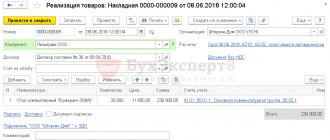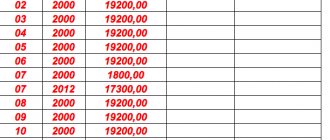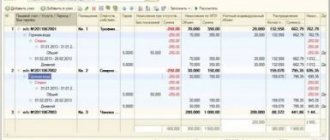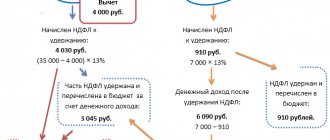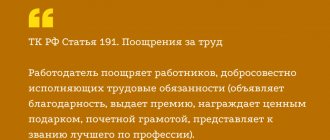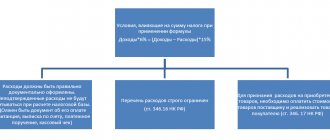A certificate of income and tax amounts for an individual (previously called Certificate 2-NDFL) reflects data on the employee’s sources of income, salary and withheld taxes. Each source of income or tax deduction has its own code in certificate 2 of personal income tax. The article provides current income and tax deduction codes for 2022 - 2022.
Code in the certificate 2-NDFL
Starting from 2022, there is no such thing as “personal income tax certificate 2” as an independent document. The certificate became part of the annual calculation of 6-NDFL. Instead of certificate 2 of personal income tax, two different certificates of income of individuals are used - for the Federal Tax Service (Appendix No. 1 to calculation 6 - personal income tax) and for citizens (Appendix No. 4). These applications were approved by Order of the Federal Tax Service dated September 28, 2021 No. ED-7-11/ [email protected]
Read more: Help 2 Personal Income Tax—changes
Both new certificates are called “Certificate of income and tax amounts of an individual,” so from now on we will call them in the old fashioned way certificate 2 personal income tax.
Certificate 2-NDFL reflects data on the employee’s sources of income, salary and taxes withheld. Each source of income or tax deduction has its own code in certificate 2 of personal income tax. These codes were approved by Order of the Federal Tax Service of the Russian Federation dated September 10, 2015 No. ММВ-7-11/ [email protected]
At the end of 2022, the tax service changed the list of codes (Order dated October 24, 2017 No. ММВ-7-11/ [email protected] ).
The list of Federal Tax Service income codes was last updated in 2022. Order of the Federal Tax Service of Russia dated September 28, 2021 N ED-7-11/ [email protected] “On amendments to appendices No. 1 and No. 2 to the order of the Federal Tax Service of Russia dated September 10, 2015 N ММВ-7-11/ [email protected] “On approval of codes for types of income and deductions.” This order introduced new codes for income and deductions, and also canceled and adjusted some of the existing codes.
The new version of the order cancels codes 1400 and 2400, which are intended for rental income, but instead adds seven new codes for types of income. These codes are valid from January 1, 2018 to the present.
The article provides current codes and shows which codes to enter in the 2-NDFL certificate for 2022 in 2022.
Main points of accounting settings:
- Taxation depends on the settings of the directory element “Accrual” or “Types of other income of individuals” in the taxes/contributions fields
- Whether the amount of personal income tax for a specific accrual will be allocated from the total amount withheld and transferred to the budget depends on how you set up the payment in the accrual document and made the payroll: Together with the salary (in this case, personal income tax will not be divided by income codes)
- During the inter-payment period (in this case, the statement and the personal income tax withheld in it will fall under a separate income code)
- as from the reflection settings (organization, division, element of the “Accruals” directory, card of the “Employees” directory or the document “Distribution of basic earnings”)
Examples of problems of reflecting such transactions in accounting using the example of a client with 1C:KA:
Question from a previous client: Why does renting a car give 76 invoices when you need 73??
76 account for mutual settlements is created automatically if the transaction is on the line “Income of counterparties”. If you select the manual operation “Other settlements with personnel”, then 73 appears, but then if you create an expense order and automatically generate transactions, then all mutual settlements for salary transactions, where the analytics are Individuals, go only to account 70.
We checked that on the ZUP side, if the car rental is carried out as recommended by the ITS, the document “Other income” (there is no operation setting in them) always sets the operation on the line of the document “Reflection of wages in accounting” as “Income of counterparties”, respectively in the accounting program and management accounting program, these employees must be entered in the Counterparties directory.
Income code in personal income tax certificate 2 2022
The following income codes are applied in personal income tax certificate 2 for 2021:
- 1010 — transfer of dividends;
- 1401 — income received from leasing or other use of residential real estate;
- 1402 - income from leasing or other use of property, except for income related to group 1401;
- 1500 - income from contracts for the purchase and sale (exchange) of securities, which are taxed on the basis of paragraph. 2 p. 1 art. 226 Tax Code of the Russian Federation;
- code 2000 is wages, including additional payments and allowances (for harmful and dangerous work, for night work or combined work);
- 2001 - this is the remuneration of directors and other similar payments received by members of the organization’s management body (board of directors, etc.);
- code 2002 - bonus for production and similar results that are provided for in employment contracts, collective agreements or legal norms;
- 2003 — remunerations paid from the organization’s profits, special-purpose funds or targeted revenues;
- 2004 — monthly monetary rewards from the federal budget to teachers - class teachers from state and municipal educational organizations;
- 2010 — income from civil contracts, excluding copyright contracts;
- code 2012 - vacation pay;
- code 2013 - to compensate for unused vacation;
- 2014 — severance pay, compensation payments in the form of average monthly earnings for the period of employment after dismissal, compensation to managers, deputy managers, chief accountants in excess of earnings for 3 or 6 months (regions of the Far North and equivalent areas);
- 2015 — daily allowance in excess of 700 rubles for each day of a business trip within the Russian Federation and no more than 2,500 rubles for each day of a business trip outside the Russian Federation;
- code 2300 - sick leave benefit. It is subject to personal income tax, so the amount is included in the certificate. At the same time, maternity and child benefits are not subject to income tax, and they do not need to be indicated in the certificate;
- 2301 — fines and penalties paid by the company by court decision for failure to satisfy consumer demands voluntarily;
- code 2510 - income in the form of payment for an individual and in his interests by organizations or individual entrepreneurs for goods (work, services) or property rights, including utilities, food, recreation, training;
- 2520 — income in kind received in the form of full or partial payment for goods, work, services performed in the interests of the taxpayer;
- 2530 — remuneration in kind;
- 2610 - denotes the employee’s material benefit received from savings on interest on loans;
- 2611 — Amounts of terminated obligations to pay debt in connection with the recognition of such debt as uncollectible, except for the cases listed in clause 62.1 of Art. 217 Tax Code of the Russian Federation;
- 2763 - the amount of financial assistance provided by an organization carrying out educational activities in basic professional educational programs, students (cadets), graduate students, adjuncts, residents and assistant trainees;
- 2790 — The amount of assistance (in cash and in kind), as well as the value of gifts received by veterans of the Great Patriotic War, home front workers of the Great Patriotic War, disabled people of the Great Patriotic War, widows of military personnel who died during the war with Finland, the Great Patriotic War, the war with Japan, widows of deceased disabled veterans of the Great Patriotic War and former prisoners of Nazi concentration camps, prisons and ghettos, as well as former minor prisoners of concentration camps, ghettos and other places of forced detention created by the Nazis and their allies during the Second World War;
- 3010 - income in the form of winnings received from participation in gambling conducted in a bookmaker's office and totalizator
- 3011 — winnings from participation in the lottery;
- 3020 — interest on bank deposits;
- 3023 — income in the form of interest (coupon) received by taxpayers from ruble bonds of domestic organizations issued after January 1, 2022;
- code 4800 is a “universal” code for other employee income that is not assigned special codes. For example, daily allowances in excess of the tax-free limit, additional sick pay, stipends;
Codes of income that are subject to personal income tax when the limit is exceeded
- 2720 - cash gifts to an employee. If the amount exceeds 4,000 rubles, then tax is charged on the excess. In the certificate, the amount of the gift is shown with income code 2720 and at the same time with deduction code 501 .
- 2760 - financial assistance to an employee or former employee who retired due to disability or age. If the amount of assistance exceeds 4,000 rubles, then a tax is levied on the excess. In the certificate, the amount of financial assistance is shown with the income code 2760 and at the same time the deduction code 503 .
- 2762 - one-time payment in connection with the birth or adoption of a child. If the amount exceeds 50,000 for each child, but for both parents, then tax is charged on the excess amount. In the certificate, this amount is shown with income code 2762 and deduction code 504 .
Reflection of income type codes in “1C: Salaries and Personnel Management 8”
The 1C: Salaries and Personnel Management 8 program, edition 3, implements all the necessary functionality for organizing payments to individuals in accordance with current legislation.
Setting up income types for enforcement proceedings
In the Accruals card on the Taxes, contributions, accounting tab, a new field Type of income for enforcement proceedings has been added (Fig. 1).
Rice. 1. Setting up the “Type of income” for enforcement proceedings
The values of the Type of Income for enforcement proceedings correspond to the Directive of the Central Bank of the Russian Federation dated October 14, 2019 No. 5286-U:
- Wages and other income with restrictions on recovery corresponds to code “1” when transferring funds that are wages and (or) other income for which restrictions are established by Article 99 of Law No. 229-FZ. This type of income is indicated for all accruals included in the calculation base of the deduction under the writ of execution: salary, bonus, sick leave for disability, etc.;
- Income that cannot be levied (without reservations) corresponds to code “2”: when transferring funds that are income, which, in accordance with Article 101 of Law No. 229-FZ, cannot be levied, with the exception of income, to which, in accordance with Part 2 of Article 101 of Law No. 229-FZ, restrictions on foreclosure do not apply. This type of income is established for accruals that are not included in the calculation base of the withholding under the writ of execution: child care benefits, maternity benefits, compensation payments, daily allowances, etc.;
- Income that cannot be foreclosed on (with reservations) corresponds to code “3”: when transferring funds that are income to which, in accordance with Part 2 of Article 101 of Law No. 229-FZ, restrictions on foreclosure do not apply. Only alimony can be withheld from such income. For example, income with code “3” includes compensation for harm caused to health, some other income not related to wages;
- Income without limitation of penalties (code not specified) corresponds to the case when the type of income code is not specified. Namely, the payment type code is not indicated for amounts that cannot be collected. At first glance, the name does not correspond to the content of the mentioned paragraph 2 of the Directive of the Central Bank of the Russian Federation. In the program, the name of the type of transfer for enforcement proceedings states “without limitation of penalties,” and in the Directive of the Central Bank of the Russian Federation it is stated that “collection cannot be levied.” The fact is that paragraph 4 of the Order of the Ministry of Justice obliges banks to include in the calculation of the amount for which collection of funds can be applied, those funds in respect of which Article 99 of Law No. 229-FZ establishes restrictions on the amount of withholding and which cannot be recovered . Thus, for a transfer without specifying a code, it turned out that the names in the program “Income without limitation of collections” and in the legislation “payments that cannot be collected” mean the same thing. Firstly, this transfer is not necessarily income (for example, reimbursement of expenses, transfer of own income from business activities). Secondly, the bank should foreclose on this amount.
From all of the above, it is clear that banks will not collect only from income with code “2”.
For existing accruals in the program, the value is set automatically in accordance with the specified Accrual Purpose on the Main tab. Next, be sure to check the autofill result. If the Type of income in the accruals used was automatically determined incorrectly, then it should be adjusted.
When setting up accruals and deductions, additional control is performed. Accrual with the established Type of income for enforcement proceedings. Income that cannot be recovered (without reservations) cannot be included in the calculation base of deductions for writs of execution.
When conducting accrual documents, all amounts are recorded taking into account the established Types of income for enforcement proceedings. Therefore, it is important to perform the correct settings before performing calculations in the program. Otherwise, after changing the settings, the accrual documents will have to be reposted.
Registration of deductions made
The information letter of the Bank of Russia dated February 27, 2020 No. IN-05-45/10 “On indicating the amount collected in the settlement document” clarifies that the obligation to indicate in the settlement document the amount collected under the writ of execution rests with the persons transferring to the debtor’s account in bank or other credit organization wages and (or) other income.
In the program "1C: Salary and Personnel Management 8" edition 3, a new column Collected has been added to non-cash statements (Statement to the bank, Statement to accounts) (Fig. 2).
Rice. 2. Statement to the bank
The Collected column is filled in with amounts calculated in accordance with registered executive documents.
In the 1C: Salaries and Personnel Management 8 program, edition 3, alimony and other enforcement documents are registered with the document Writ of Execution. The Worksheet document is available if in the salary calculation settings (section Settings - Payroll calculation - link Setting up the composition of accruals and deductions) on the Deductions tab, the Deductions by executive documents flag is selected.
The Collected field in non-cash statements is filled in with the amount calculated on the Deductions tab in the documents Accrual of salaries and contributions and Accrual under contracts. The calculation in the document Accrual for the first half of the month currently does not affect the calculation of deduction for the month and is not displayed in the statements.
It should be understood that manual correction of the collection amount in the advance payment statement will entail the need for continued monitoring and subsequent manual correction in the monthly payroll statement.
In addition, at the moment, when filling out the Collected field, the data recorded in the Limitation of Collections document is not taken into account. Changes in amounts made manually in the Collected column are not taken into account in subsequent entries.
Version 3.6 of the standard for exchange with a bank
The standard for exchange files with a bank for a salary project is not regulated by law and may be different for each bank.
Together with Sberbank of Russia, a standard for electronic information exchange based on XML technology has been developed, which is supported by many other banks (more about the format). File generation in the program is implemented according to this standard.
The requirements for transmitting information to the bank about the types of income under enforcement proceedings and the amounts withheld under enforcement documents are implemented in the new EBI Standard with the bank version 3.6.
To interact directly from the program with a bank that, for some reason, does not support the standard, but the exchange of electronic documents with which is generally possible (according to the bank’s standard), will require its modification, which can be done in different ways.
Without modification, you can obtain the required information about employees and amounts from the program and manually transfer it to the program of such a bank.
In the program “1C: Salary and Personnel Management 8” edition 3, the Standard EPO with a bank (version 3.6) is indicated in the Salary Project card in the File Format field (Fig. 3).
Rice. 3. Selecting the payroll project file format
Deduction code for personal income tax certificate 2 2022
The following deduction codes are used in personal income tax certificate 2 for 2021:
Standard children's deductions (subclause 4, clause 1, article 218 of the Tax Code of the Russian Federation)
— Deduction for a child under the age of 18, as well as for a full-time student under the age of 24 to the parent, spouse of the parent, adoptive parent who is supporting the child:
- 126 — when providing a deduction for the first child;
- 127 - when providing a deduction for a second child;
- 128 - when providing a deduction for the third and each subsequent child;
- 129 - when providing a deduction for a child who is a disabled person of group 1 or 2.
— A double deduction for a child under the age of 18, as well as for a full-time student under the age of 24 – for a single parent, adoptive parent:
- 134 — when providing a deduction for the first child;
- 136 - when providing a deduction for a second child;
- 138 - when providing a deduction for the third and each subsequent child;
- 140 - when providing a deduction for a child who is a disabled person of group 1 or 2.
— A double deduction for a child under the age of 18, as well as for a full-time student under the age of 24 – to one of the parents, if the other parent refused to receive his child’s deduction
- 142 — when providing a deduction for the first child;
- 144 - when providing a deduction for a second child;
- 146 - when providing a deduction for the third and each subsequent child;
- 148 - when providing a deduction for a child who is a disabled person of group 1 or 2.
Codes of property deductions: (Article 220 of the Tax Code of the Russian Federation)
- 311 — Expenses for the construction/purchase of housing on the territory of the Russian Federation, the acquisition of land plots for individual housing construction (IHC), land plots on which the purchased residential buildings are located.
- 312 — Interest expenses on targeted loans received for the construction/purchase of housing in the Russian Federation, the acquisition of land plots for individual housing construction, land plots on which the purchased residential buildings are located.
Social deduction codes (subparagraph 2 and subparagraph 3, paragraph 1, article 219 of the Tax Code of the Russian Federation):
- 320 — Taxpayer’s expenses for his or her brother’s or sister’s education under the age of 24 full-time in educational institutions within the established limit.
- 321 — Expenses of the taxpayer-parent (guardian, trustee) for full-time education of their children (wards, former wards) under the age of 24 in educational institutions within the established limit.
- 324 — Expenses for medical services provided to the taxpayer himself, his spouse, parents, children (including adopted children), wards under the age of 18, as well as expenses for medications prescribed by the attending physician and purchased by the taxpayer at his own expense funds within the established limit.
- 325 — deduction for contributions paid for voluntary health insurance for oneself, spouse, parents or children (including adopted or warded) under the age of 18;
- 326 - deduction for expenses for expensive treatment;
- 327 - deduction for expenses on paying contributions to non-state pension funds or under long-term voluntary life insurance contracts for yourself, your family members, close relatives;
- 328 — deduction for additionally paid by the taxpayer savings contributions to the Pension Fund.
Professional deduction codes: (Article 221 of the Tax Code of the Russian Federation)
- 403 — documented expenses incurred during the performance of work (provision of services) under civil contracts;
- 404 — documented expenses associated with receiving royalties;
- 405 - the amount within the standard costs associated with receiving royalties (as a percentage of the amount of income).
Codes of deductions for income not subject to personal income tax within certain amounts (subclause 8 and subclause 28 of article 217 of the Tax Code of the Russian Federation)
- 501 and 502 - deduction from the value of gifts received from organizations and individual entrepreneurs;
- 503 and 504 - deduction from financial assistance provided to employees, as well as former employees who quit due to retirement;
- 505 — Deduction from the value of winnings and prizes issued as a result of competitions, games and other events held for advertising purposes;
- 506 — deduction from one-time financial assistance paid to a disabled person by a public organization of disabled people;
- 507 — deduction deduction from one-time financial assistance or gift given to a participant in the Great Patriotic War;
- 508 — Deduction from one-time financial assistance to employee-parents (adoptive parents, guardians) at the birth (adoption) of a child;
- 509 — deduction for income issued by products to an employee of an agricultural producer;
- 510 — deduction for additional savings contributions to the Pension Fund of the Russian Federation paid by the employer for the taxpayer.

